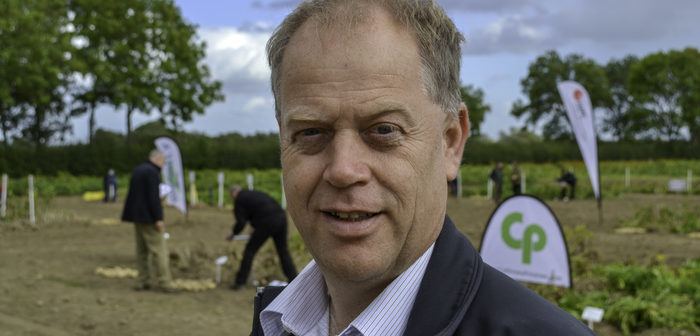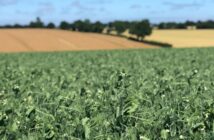Addressing the increasing virus problem faced by seed potato growers may call for a re-think on how drills are planned and the implementation of effective IPM strategies to help combat the risk of virus-vectoring aphids developing insecticide resistance.
Innovative research, led by Eric Anderson of Scottish Agronomy, has shown sowing spring barley around headlands and wildflowers along tramlines of seed potato fields can help to reduce virus incidence.
Mr Anderson says: “Virus health is one of the industry’s most important challenges. The main culprit is PVY, principally the PVYN strain, but PLRV has also increased albeit from a very low base.
“There are concerns that visual observation is becoming a less reliable method of assessing plant health.
“PVYN may easily go undetected, partly because less aggressive PVYN recombinants might have been selected for by the action of roguing out PVYO with obvious field symptoms.”
Other concerning factors are the growth in popularity of asymptomatic (tolerant) cultivars, loss of insecticides and rises in late season infection due to loss of desiccants slowing down haulm destruction and allowing more frequent regrowth.
He notes that the incidence of aphid-vectored mosaic viruses tend to be higher on the perimeter edges of fields or adjacent to blank separation beds.
“Previous research has shown that long wavelength light reflected from the soil and the contrasting green crop attracts winged aphids to the boundaries between the planted field and the dark-soil of blank beds.
“These effectively provide ‘landing strips’ for aphids who tend to land in higher numbers in these areas. This is particularly acute in second and third generation (FG2 and FG3) seed potatoes.
“Cereal purge strips or spring barley borders are readily adaptable to current production practices, although the greatest benefits in reducing PVYN incidence may occur in smaller blocks of Pre-Basic seed potatoes.
“Where aphids first land in the surrounding cereal crop, this ‘cleans’ the aphid stylet of PVYN and other potyvirus including PVYO, PVA and PVV before they progress onto the seed potatoes.”
Once aphids are in the crop, reliance on a single mode of action and widespread use of pyrethroids risks elevating selection pressure for resistance, warns Mr Anderson.
“We are seeing shifts in sensitivity to pyrethroids such as lambda-cyhalothrin, and there is already resistance in a number of these aphids, including the peach potato aphid (Myzus persicae), willow carrot aphid (Cavariella aegopodii) and English grain aphid (Sitobion avenae).
In addition, research conducted in Ireland led by Teagasc research officer Dr Lael Walsh have found sensitivity shift to pyrethroids in the bird cherry oat aphid.
“We do not know whether the single clone tested in Ireland is common in Scotland.”
“But with prevailing westerly winds, the risk of its arrival is certainly heightened.”
When pyrethroids are used, Mr Anderson advises using full manufacturer recommended rates, cautioning that blanket spraying has a negative effect on beneficials.
“The situation demands that we make better use of Integrated Pest Management (IPM) to protect the virus health of seed and ware potatoes.”
Planting wildflowers in tramlines can provide habitats for their natural enemies; such as hoverflies, ladybirds, lacewings and parasitic wasps.
“Insect counts in trials have found an important increase in numbers of adult natural enemies within flower strips, with hoverflies up by 339 per cent, ladybirds 177per cent and lacewings 233 per cent, compared with potato controls.
Cornflower, common vetch and yarrow worked well as banker plants by providing the correct density and diversity of habitat for the predators and parasites, he reports.
Timing of planting needs to be factored in so that plants can sufficiently support the natural enemies and deliver them to the crop when they are most needed.
“This is because of the lag period as natural enemies take time to build their numbers.”
The distance the predators will travel into the crop also impacts on predators’ efficacy, and the estimated maximum distance is 50m, so using the tramlines helps biocontrol.
“Better knowledge of the roles biology, ecology and evolution play, will provide new insights to help make aphid and potyvirus control more effective.
“A holistic IPM approach integrating both traditional and modern tools will improved on-farm biodiversity and contribute to producing high health seed health.”




